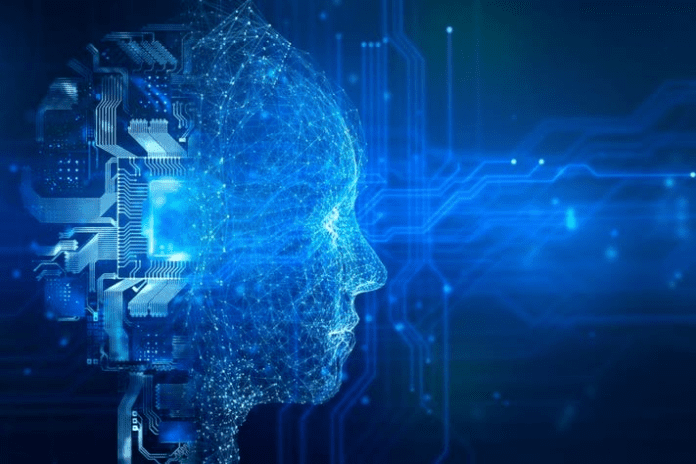In the fast-paced world we live in today, technology is not just a tool; it’s an integral part of our daily lives. From smartphones to artificial intelligence, advancements in technology continue to shape how we interact, work, and understand the world around us. This article explores the current trends and innovations in technology, examining their impact and future potential.
The Rise of Artificial Intelligence

Artificial intelligence (AI) is arguably the most transformative technology of the 21st century. Its applications span numerous sectors, including healthcare, finance, transportation, and entertainment. AI systems analyze vast amounts of data, identifying patterns and making predictions with remarkable accuracy.
One notable trend is the emergence of generative AI, which creates content—be it text, images, or music—using algorithms. This technology powers everything from chatbots that enhance customer service to platforms that generate artwork. As generative AI evolves, it raises questions about creativity, copyright, and the role of human artists in a digital age.
Real-World Applications of AI
- Healthcare: AI is revolutionizing diagnostics, enabling early detection of diseases through image analysis and predictive analytics. For example, algorithms can analyze medical scans more quickly and accurately than human radiologists, leading to better patient outcomes.
- Finance: Financial institutions use AI for fraud detection and risk assessment, improving security and operational efficiency. Robo-advisors provide personalized investment advice based on data-driven algorithms, making financial services more accessible.
- Transportation: Autonomous vehicles are becoming a reality, with companies like Tesla and Waymo leading the charge. These vehicles utilize AI to navigate roads, enhance safety, and reduce traffic congestion.
The Internet of Things (IoT)
The Internet of Things (IoT) refers to the interconnection of everyday devices through the internet, enabling them to send and receive data. This technology has grown exponentially, with an estimated 75 billion devices expected to be connected by 2025.
Smart Homes and Cities
IoT technology is at the heart of smart homes, where devices like thermostats, lights, and security systems communicate with each other to optimize energy usage and enhance security. For instance, smart thermostats learn user habits to adjust heating and cooling, reducing energy bills and environmental impact.
On a larger scale, smart cities leverage IoT to improve urban living. Sensors monitor traffic patterns, air quality, and waste management, allowing city officials to make informed decisions that enhance quality of life.
Blockchain Technology
Blockchain technology, originally developed for cryptocurrency, has found applications across various industries. Its decentralized nature ensures transparency, security, and immutability of data, making it a valuable tool for supply chain management, finance, and healthcare.
Beyond Cryptocurrency
- Supply Chain Management: Blockchain enhances traceability in supply chains. Companies can track products from origin to consumer, ensuring authenticity and reducing fraud. This is especially vital in industries like food and pharmaceuticals, where safety is paramount.
- Smart Contracts: These self-executing contracts with the terms of the agreement directly written into code automate and secure transactions without the need for intermediaries, reducing costs and increasing efficiency.
- Healthcare: Blockchain can secure patient data, providing a tamper-proof record of medical history that can be accessed by authorized professionals while protecting patient privacy.
Augmented and Virtual Reality (AR/VR)
Augmented reality (AR) and virtual reality (VR) technologies have transformed how we experience entertainment, education, and training. While VR immerses users in a completely digital environment, AR overlays digital information onto the real world.
Applications in Various Sectors
- Education: AR and VR create immersive learning experiences. Students can explore historical sites, conduct virtual science experiments, or even simulate medical procedures, enhancing engagement and understanding.
- Gaming: The gaming industry has embraced AR and VR, with platforms like Oculus and Pokémon Go pushing the boundaries of interactive entertainment.
- Training and Simulation: Industries such as aviation and medicine use VR for training purposes, allowing professionals to practice skills in a risk-free environment.
Cybersecurity Challenges
As technology advances, so do the threats that accompany it. Cybersecurity has become a critical focus for individuals and organizations alike. With increasing data breaches and cyberattacks, safeguarding sensitive information is paramount.
Emerging Solutions
- AI-Driven Security: AI technologies are being deployed to enhance cybersecurity measures. Machine learning algorithms can identify and respond to threats in real time, analyzing patterns and adapting to new types of attacks.
- Zero Trust Architecture: This security model assumes that threats could be both outside and inside the network. It requires verification for every user and device trying to access resources, minimizing potential vulnerabilities.
- Blockchain for Security: The inherent security features of blockchain can be utilized to protect data integrity and privacy, offering innovative solutions for data management.
The Future of Work
Technology is reshaping the workplace, leading to remote work, digital collaboration, and the gig economy. The COVID-19 pandemic accelerated these trends, demonstrating the feasibility and benefits of remote work.
Tools and Platforms
- Collaboration Software: Platforms like Slack, Microsoft Teams, and Zoom have become indispensable, facilitating communication and teamwork regardless of physical location.
- Automation: Robotics and AI are automating repetitive tasks, allowing employees to focus on higher-value work. This shift is changing job roles and requiring a workforce that is adaptable and tech-savvy.
- Employee Well-being: Technology is also enhancing employee well-being. Wellness apps, virtual mental health services, and flexible work arrangements contribute to a healthier work-life balance.
Conclusion
The technology landscape is evolving at an unprecedented pace, bringing both opportunities and challenges. As we embrace these innovations, it’s crucial to consider their implications on society, privacy, and the future of work. Staying informed and adaptable will be key in navigating this ever-changing environment. Whether it’s through AI, IoT, blockchain, AR/VR, or enhanced cybersecurity measures, the future is poised to be shaped by the technologies we develop today.
In this rapidly changing world, the ability to understand and leverage technology will be critical for individuals and organizations alike. Embracing these changes with an open mind can lead to a future filled with innovation and possibility.





